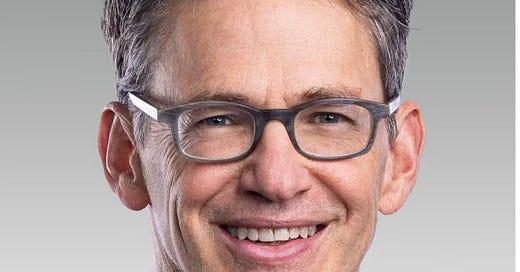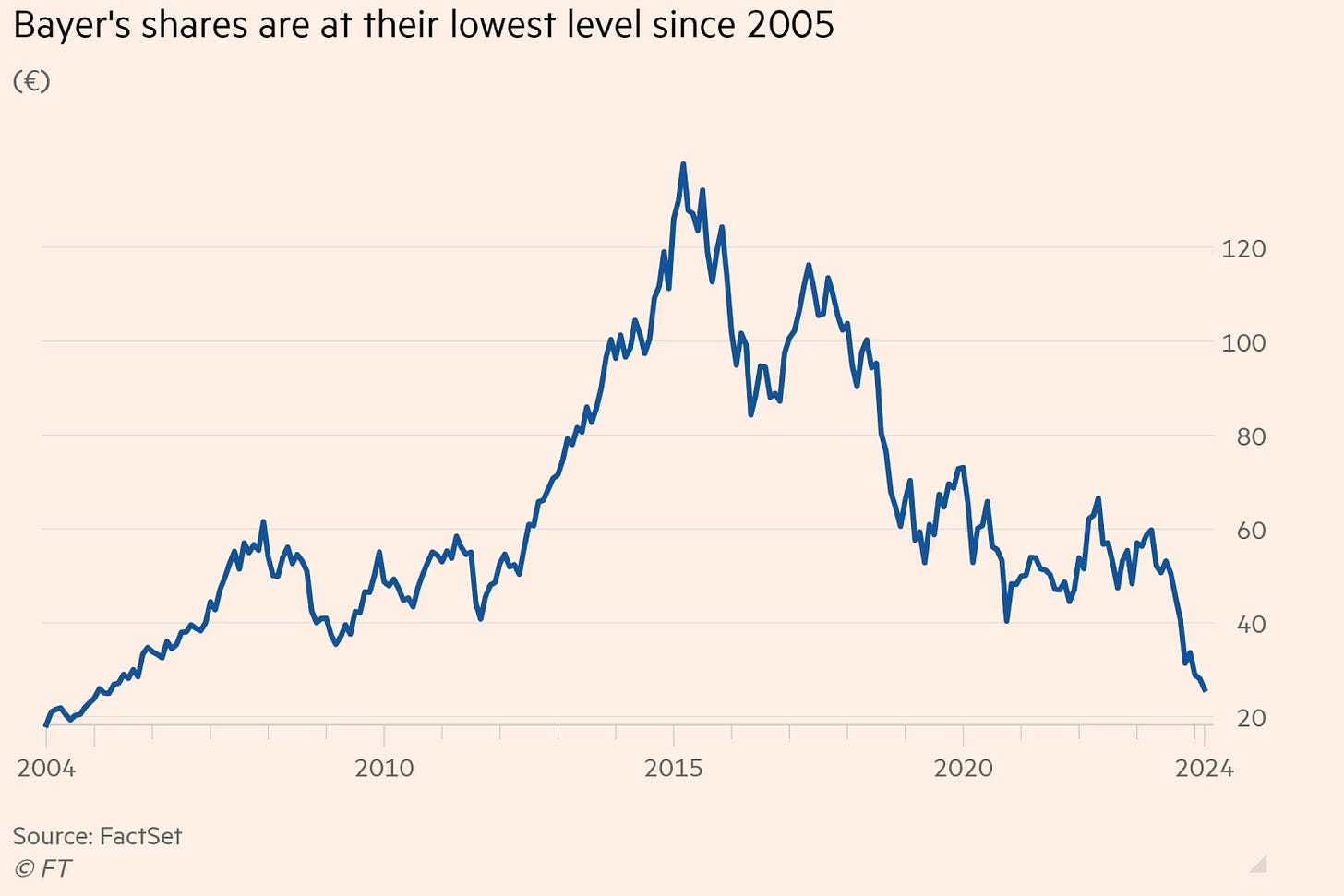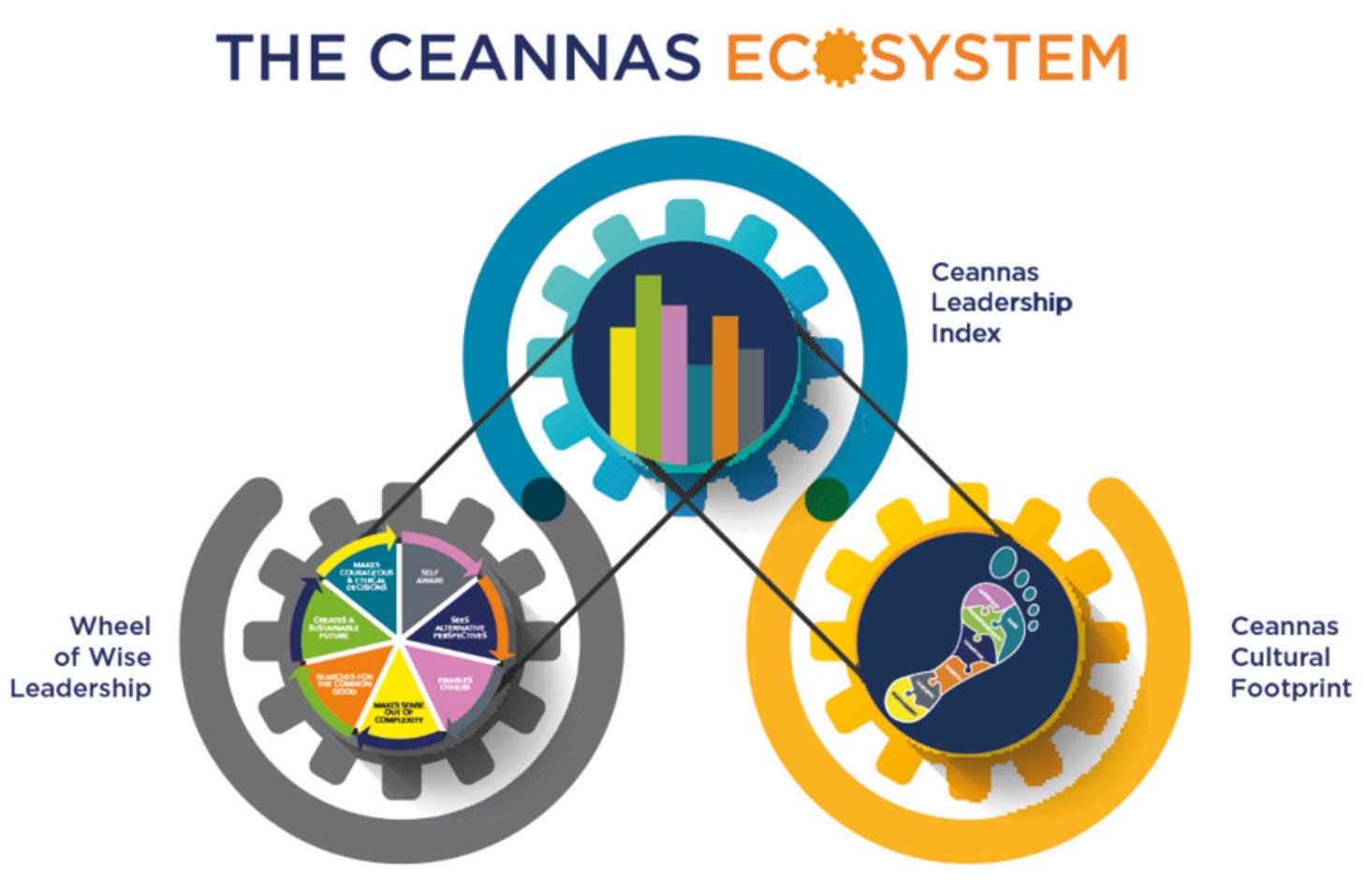Bayer AG - Turning the Organisational Pyramid on its Head
An Analysis of Dynamic Shared Ownership
When Bayer AG, one of the world’s largest multinational pharmaceutical and biomedical companies, appointed Bill Anderson as their new CEO in June 2023, they were making a conscious choice to change their operating model which had seen them post results in 2023 where sales were down 1.2%, profitability down 13.4%, and earnings per share down 19.5%. Anderson admitted that the group is ‘badly broken’ namely due to:
Patents running out on some of their most profitable products,
heavy bureaucratic constraints,
a debt burden estimated to be $46 billion
and a legal battle following the acquisition of the US agrochemical corporation Monsanto, whose weedkiller Roundup has been blamed by thousands of people for giving them cancer.
With 100,000 employees and a valuation of €121 billion at its peak, Bayer is now valued at £26 billion, and Anderson is under significant pressure to break up the business and sell off some of its constituent parts.
However, Anderson and his team have decided to take a very different route, not all of which has gained support from investors, but which was recently backed by Harris Associates, one of the company's three biggest shareholders who said Anderson was “absolutely taking the right path to enhance value creation”.
The route Anderson and his team has the following lofty ambition:
Imagine a workplace where 95% of decisions are made by those on the ground, where managers become coaches, and innovation cycles are as quick as 90 days. We're redesigning our entire operating model to put our mission - Health for all, Hunger for none - at the forefront of everything we do.
In the course of this analysis, I’ll use the Ceannas Cultural Building Blocks to describe Anderson’s course of action and explore its potential application in other companies.
CEANNAS CULTURAL FOOTPRINT
Just as our Carbon Footprint helps us to understand our impact on greenhouse gas emissions, the Ceannas Culture Footprint can allow you allow to build a picture of the components of your organisation’s culture: Leadership, Management, Warmth, Edge, Learning, Entrepreneurship, and Teamwork. By fully understanding your culture you can identify the most productive changes to our behaviour.
MANAGEMENT
When people talk about cultural change they rarely mention Management as being a key driver in the change process, yet for Bayer, the redesign of the operational model is at the heart of a very significant cultural shift.
I find it fascinating that Bill Anderson is taking a leaf out of Jan Wallander’s playbook who redesigned the operational structure of Handelsbanken 50 years ago around the same concept of decentralisation.
He tracks the change back to conversations with employees who all seemed to say a version of the same thing:
“Bill we can’t get anything done”
He identified that Bayer had 10 levels of management and that problems were simply escalated up the org chart and by the time a reply came back the opportunity had been lost.
His solution was to turn the pyramid on its head by shifting 95% of decisions down to the teams that actually work with customers.
He stresses that the focus has to be on “making the customer happy” - not on “keeping the boss happy”.
Anderson has described the process in Bayer as “Dynamic Shared Ownership” by creating teams which become their own "entrepreneurial engines” as “autonomous micro businesses” who collaborate to produce solutions and work out trade offs without pushing decisions up the tree.
So far they have created 170 teams, involving 4000 people and created small, marketing, product development, and technical teams who all work towards delivering the best product possible and have a goal to create 100s of other such teams, all based around the life cycle of a product..
Michael Lurie, the ‘Chief Catalyst Officer’ explained how these teams are enabled by Finance, HR and Procurement, with their primary role being to facilitate the flow of talent, funding and resources. Again this chimes with the Handelsbanken example where the mental model of the bank shifted to one where the head office served the needs of branches, as opposed to the traditional relationship where branches served head office.
And what do employees make of this? Employees in German companies have a statutory right to representation in company governance, and this shift to empower and enable people has been accepted, if not welcomed, by the employees representatives .
“We see the new operating model as a great opportunity to significantly improve our economic situation. However, in the company's strained economic situation, the programs and measures already underway are not sufficient, which is why, with a heavy heart, we have agreed to further cuts,”
Heike Hausfeld, Chairwoman of the Central Works Council of Bayer AG
Anderson has also taken the scissors to the company rule book which extended to 1362 pages of regulations, which resulted in a “rules paralysis”. It’s now been cut by 99% with the intention of:
“Turning people loose to pursue the company mission”.
In DSO regulations relating to quality control, and governance go away and instead of adding a layer of control they become part of the team’s core responsibility.
LEADERSHIP
Running alongside the structural changes are very significant changes to the concept of management and leadership.
Bill Anderson calls for ‘more leadership and less management”.
This requires a change in mindset about a fundamentally new approach to leadership by helping people to become more aware of the limiting mindsets and beliefs that cause people to defend and protect the status quo and to shift them to more enabling mindsets to allow us to work together.
Michael Lurie, Chief Catalyst Officer
It’s the same move described by Jan Wallander where managers move from command and control to leadership functions which unleash the latent potential in the business.
Of course it would be naive to think that the role of senior leaders is marginalised in such a culture shift. In actual fact the role of senior leaders becomes even more critical for it is their own ‘behaviour’ that must undergo a transformation.
For Bill Anderson and his team it’s about:
Furthering the company mission - HEALTH FOR ALL - HUNGER FOR NONE
Better performance - by creating the conditions to empower teams
More meaningful jobs
At significantly less cost
The final word on leadership goes to Bill Anderson when he reflected on the typical culture in most organisations where:
“The system controls the leaders, rather than leaders controlling the system”
Everything about the leadership team’s behaviour appears to be geared towards taking control of the system and then radically redesigning it to meet the needs of the company - rather than, as he says, the other way around.
So much of this aligns with the Ceannas concept of Disciplined Initiative, where leaders create the scaffolding for people to employ their own initiative within a very clearly articulated mission, vision, systems, strategy, and freedoms and constraints.
Ceannas Scaffolding (copyright)
Notes on the Scaffolding:
Bill Anderson has selected a difficult route.
He could have buckled to the pressure from investors and chosen to dismantle Bayer AG but he’s demonstrated real courage to do what he would describe as the ‘right’ thing (both fundamental elements of wise leadership) for Bayer AG and its people.
His strategic intent is exceptionally clear and he and his team have woven a powerful narrative which is consistent, compelling and enabling.
He has reduced constraints and increased freedoms, and is engaging in a continuous dialogue with his people to ensure they understand the purpose and direction of the changes.
The desired outcome is to release the latent capacity within every individual in the business by liberating them from the chains of bureaucracy and enabling them to operate with true ‘disciplined initiative’.
EDGE
Of course all this could all be a very clever way to frame job reductions, which have been, and are likely to be even more significant.
Typical US pharma companies have a 3-5 people per manager, Bayer had 8-9 colleagues per manager, but the aim is to shift towards 15-20 people per manager , which will result in reduction in managers in the US alone of over 40%.
As I outlined in the initial paragraphs Bayer AG face some critical headwinds and if it isn’t to be split up Anderson and his team must reduce costs, improve performance and profitability. This speaks to ‘building a sustainable future’ within the wheel of wise leadership where costs must be reduced or there is simply no future for Bayer AG.
Bayer’s intention is to keep that focus but to do that alongside the implementation of a radical redesign which gets rid of bureaucracy and sets people free to contribute towards the shared goal.
WARMTH
Warmth seems to run through much of Anderson’s rhetoric. He appears to trust his people and believes if he can create the right conditions and free up managers to become leaders then the business can thrive as a community and profitable entity - but these are not binary options. Warmth and Edge need to be owned by everyone.
ENTREPRENEURSHIP
I’ve already mentioned the desire to create teams as ‘entrepreneurial engines’ and ‘autonomous micro-businesses’.
Even the terminology creates a momentum for change, for it’s virtually impossible to use such terms and then continue to behave a manner which replicates command and control.
LEARNING
Heike Prinz, the Chief People Officer, describes how they want to build a talent marketplace, where people aren’t just identified by their position on the org chart, but by their interests, passions and expertise.
She also explains how their performance management system has shifted to peer accountability:
“You can fool your boss, but you can’t fool your colleagues”
This has huge resonance for us at Ceannas as we apply the Leadership Sonar and Radar with our clients based on the opinion of those they lead (Sonar) and their peers and leaders (Radar). This information is so much more powerful when you can compare these two alternative perspectives and provides for very significant learning to take place.
TEAMWORK
I think it goes without saying that Teamwork lies at the heart of Bill Anderson’s plans. On both a vertical and horizontal level the logic of what he and his team are attempting to create requires people to work work together in a very different manner from the dominant bureaucratic model.
It requires trust, candour, give and take, vulnerability, caring, and a focus on delivering high quality performance.
Perhaps the best clue lies in the phrase Dynamic Shared Ownership.
Dynamic is defined as a constant change, activity, or progress, or a person with a positive attitude and full of energy and new ideas.
Shared is defined as being distributed between members of a group or possessed in common with another or others.
Ownership is defined as the act, state, or right of possessing something.
I’m not really a fan of the term itself, but the intention behind it, especially when you dig behind the words, gives cause for optimism.
CONCLUSION
No one can tell if Bayer’s bold experiment will work. The dark forces of financial investors might yet cause the initiative to be drawn to a halt as the Group is split up and sold as parts. The levels of debt, years of bureaucratic management, and the legacy of bad decisions might all act against Bill Anderson achieving his goals.
However, there are enough signs to indicate that change is already beginning to happen.
Other companies who have gone down this route have proven it to be successful, most notably GE Appliances and Handelsbanken.
To rephrase an earlier Bill Anderson quote:
“Leaders need to control the system, rather than the system controlling them.
If there’s a lesson for leaders everywhere it lies in these simple words. For cultural change goes far beyond simplistic pulse, temperature or engagement surveys. It needs to get beneath the surface. Study the root causes, rather that the symptoms. And only once you have made sense of that complexity set about redesigning the system, and the behaviour of your leaders.
Good luck Bayer. We’ll be watching.
Notes:
Each Leadership Spotlight uses elements of the Ceannas Ecosystem to analyse organisations or individual leaders. The Ceannas Ecosystem is made up of three analytical frameworks, composed of the seven Leadership lenses; the seven building blocks of the Cultural Footprint; and the seven components of the Wheel of Wise Leadership. In our work with leaders we help them to embed these frameworks to the extent that they inform their thinking, leadership behaviour and decision-making to do “the ‘right’ thing, at the ‘right’ time, for the ‘right’ reasons”. Contact us on home@ceannas,com to find out more about our philosophy, methodology, programmes, workshops and technology.









